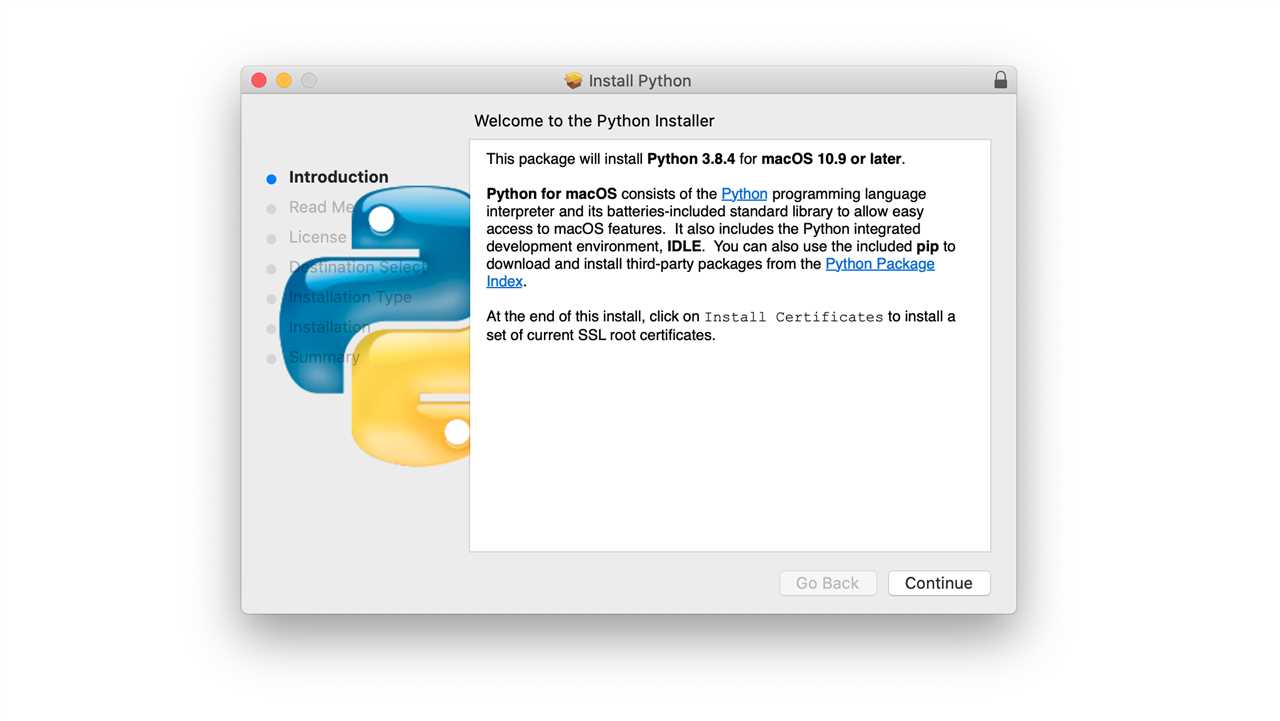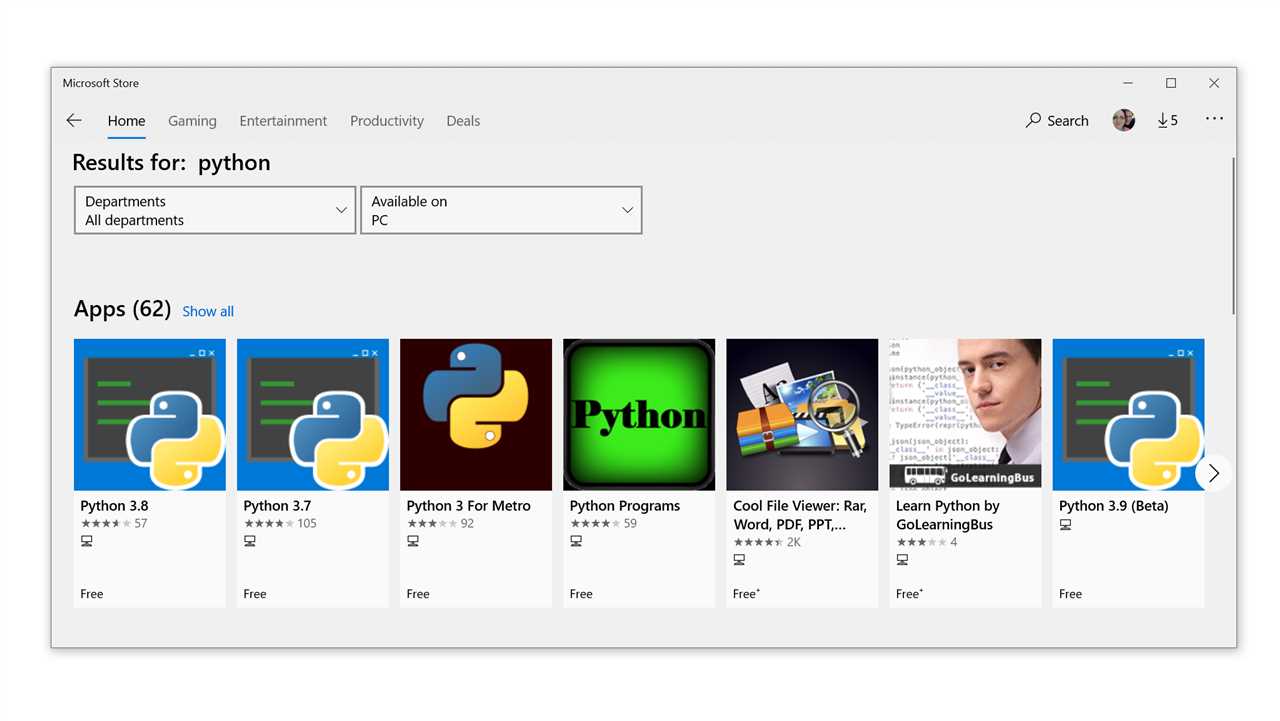
If you are new to Python programming, you may be wondering how to install modules to enhance the functionality of your code. Python modules are pre-written pieces of code that contain functions, classes, and variables that can be used in your programs. Installing modules is a crucial step in expanding the capabilities of your Python projects.
In this step-by-step guide, we will walk you through the process of installing Python modules. Whether you are using Windows, macOS, or Linux, the installation process is similar and straightforward. By following these instructions, you will be able to easily install any Python module you need for your projects.
Before we dive into the installation process, it is important to note that Python comes with a built-in package manager called pip. Pip allows you to easily install, upgrade, and manage Python modules. It is recommended to use pip for installing modules, as it simplifies the process and ensures that you are using the latest versions of the modules.
Section 1: Installing Python

Before you can start using Python and its modules, you need to install the Python programming language on your computer. Here are the steps to install Python:
| Step 1: | Go to the official Python website at www.python.org. |
| Step 2: | Click on the “Downloads” tab. |
| Step 3: | Choose the version of Python you want to install. It is recommended to install the latest stable version. |
| Step 4: | Scroll down and select the appropriate installer for your operating system. Python is available for Windows, macOS, and Linux. |
| Step 5: | Once the installer is downloaded, run it and follow the on-screen instructions to install Python. |
| Step 6: | After the installation is complete, open the command prompt (Windows) or terminal (macOS/Linux) and type “python” to check if Python is installed correctly. You should see the Python version information. |
Once Python is installed, you can proceed to install Python modules using various methods depending on your needs.
Step 1: Downloading Python

In order to install Python modules, you first need to have Python installed on your computer. If you don’t have Python installed, you can download it from the official Python website.
To download Python, follow these steps:
- Go to the official Python website at https://www.python.org/downloads/.
- Choose the version of Python you want to install. It is recommended to download the latest stable version.
- Click on the download link for your operating system. Python is available for Windows, macOS, and Linux.
- Once the download is complete, run the installer and follow the on-screen instructions to install Python.
After successfully installing Python, you can proceed to the next step of installing Python modules.
Step 2: Installing Python

Once you have successfully installed Python on your system, you can proceed to installing Python modules. Python modules are pre-written code that can be imported and used in your Python programs to extend their functionality.
To install Python modules, you can use the pip package manager, which comes bundled with Python. Pip allows you to easily install, upgrade, and manage Python packages.
To install a Python module using pip, open your command prompt or terminal and type the following command:
pip install module_name
Replace module_name with the name of the module you want to install. For example, if you want to install the requests module, you would run the following command:
pip install requests
Pip will then download and install the module from the Python Package Index (PyPI) or from a specified location.
If you want to install a specific version of a module, you can specify the version number in the command. For example:
pip install module_name==1.0.0
This will install version 1.0.0 of the module.
Once the installation is complete, you can import the module in your Python program using the import statement. For example:
import module_name
Now you are ready to start using the installed Python module in your programs!
Step 3: Verifying the Installation

After successfully installing Python and the desired modules, it is important to verify that the installation was successful. This step ensures that the modules are properly installed and can be accessed by Python.
To verify the installation, follow these steps:
- Open a command prompt or terminal window.
- Type python to start the Python interpreter.
- Once the Python interpreter is running, type import module_name to import the desired module. Replace module_name with the name of the module you want to verify.
- If there are no error messages, the module has been successfully installed and can be used in Python.
It is important to note that some modules may require additional dependencies or configurations. In such cases, the installation instructions provided by the module’s documentation should be followed.
Verifying the installation of Python modules is an essential step to ensure that the modules are properly installed and can be used in Python. By following these steps, you can confidently proceed with using the installed modules in your Python projects.
Section 2: Understanding Python Modules

In Python, modules are files containing Python code that define functions, classes, and variables that can be used in other Python programs. Modules allow you to organize your code into reusable components, making it easier to maintain and update your codebase.
To use a module in Python, you first need to install it. Installing a module is a process of downloading and adding the module to your Python environment so that it can be imported and used in your code.
Python provides a package manager called pip that makes it easy to install modules. You can use the command pip install [module_name] to install a module. For example, to install the requests module, you would run pip install requests.
Once a module is installed, you can import it into your Python program using the import statement. For example, to import the requests module, you would write import requests.
After importing a module, you can use its functions, classes, and variables in your code. For example, if the requests module has a function called get, you can call it using requests.get().
Python modules are a powerful tool that allow you to extend the functionality of Python and make your code more efficient and organized. By understanding how to install and use modules, you can take advantage of the vast ecosystem of Python libraries and packages available to you.
Step 1: What are Python Modules?

In Python, modules are files that contain Python code, which can be used to extend the functionality of the Python programming language. They are like libraries or packages that provide additional features and functions to your Python programs.
Python modules can be installed using the pip command, which is a package manager for Python. With pip, you can easily install, upgrade, and manage Python modules.
Modules are essential in Python programming as they allow you to reuse code, organize your code into separate files, and make your code more modular and maintainable. They provide a way to encapsulate related code and make it easier to manage and understand.
When you install a Python module, you gain access to a set of functions, classes, and variables that you can use in your Python programs. These modules can be used to perform specific tasks, such as working with files, manipulating data, or interacting with external APIs.
Python has a large ecosystem of modules available, which means that you can find modules for almost any task you can think of. Whether you want to work with databases, create web applications, or perform scientific calculations, there is likely a Python module available that can help you.
Step 2: Why are Python Modules Important?

Python is a versatile programming language that offers a wide range of functionality out of the box. However, as your projects become more complex, you may find that you need additional features or tools that are not included in the standard Python library. This is where modules come in.
Modules are pre-written code that provide additional functionality to Python. They allow you to extend the capabilities of the language by adding new functions, classes, and variables. By installing modules, you can easily access and use these additional features in your code.
Python modules are created by other developers and are made available to the community for free. This means that you can take advantage of the work done by others and save time and effort by not having to reinvent the wheel. Whether you need to work with databases, handle complex mathematical calculations, or interact with external APIs, there is likely a module available that can help you accomplish your task.
To install modules, you can use the Python package manager pip. Pip allows you to easily search for, download, and install modules from the Python Package Index (PyPI). With just a few simple commands, you can add new functionality to your Python environment and start using it in your projects.
Overall, Python modules are important because they allow you to expand the capabilities of the language and leverage the work done by other developers. By installing modules, you can access a wide range of additional functionality and save time and effort in your coding projects.

